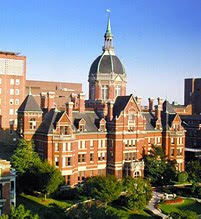The cool temperatures that have settled over the area put a chill on Faina's interest in a daily stroll. She did take to the road and did a little clothes shopping. A stop at the local supermarket yielded a box of L'oreal Excellence and a cover-up of Faina's salt and pepper follicles.
It was a strange feeling having Tuesday morning come and not having to head up to Hopkins. This non-appointment served as a punctuation mark on this wait-and-see period and we are somewhat looking forward to the October 20th date with Dr. Schulick.
In the meantime, some interesting numbers:
We keep a daily log on the output from the fistula. The numbers on that have dropped from having been in the 500-600 ml range about a month ago to the double digit range, the past few days going under 50 ml. Could this mean the fistula is actually closing up on its own? The chances were 50-50 according to Dr. S. so we are hopeful that that is the case. We are getting closer to an answer to that penultimate question, surgery or natural healing and the more prosaic, corollary question, real food or TPN/IV nutrition.
Now for some big, rising numbers reported by The Johns Hopkins Hospital with the all caps qualifier "THIS IS NOT A BILL": Total Amount $106,244.76. The statement also says "Please note that the charges for services provided by a physician are not included in the total hospital charges." That particular number, still rising like the counter on a pinball machine, with the ball (Faina) bouncing off bumpers (doctors charges), dropping into holes (tests), cruising over rollovers (pharmacy expenses), and staying in play with flippers (our trusty automobile), some gentle nudging, and the ever welcome "Extra Ball' (the next day). A most daunting medical mystery is how these bills get paid.
This narrative has played out for us amidst the backdrop of a national health care debate. What is obvious is that in any system all of this medical care has an economic cost. The tests, pharmaceuticals, nurses, technicians, physicians and the administrative apparatus that facilitates this system is a percentage of the GNP. Some of the questions provoked are the relationship of the individual to the greater society, the respective responsibility of one to the other, and respect for the dignity and value of the individual. Taken to an extreme, should we have amassed a $200,000 fund for this contingency? Not having done that, would anything resembling a bank give a loan in such a situation? (Is maxing out a credit card a back door route to this end?) Stepping aside from those alternatives, what choices would any of us want to see, for ourselves, for the family next door, for an individual ten postal codes away? What do the choices we make as a society regarding health care say about our appreciation for collective responsibility? What is health insurance? It is a pooled bet that we statistically know some will need to draw on and others won't. Questions become who is in the pool, what does membership cost, and what are the club benefits? Huge questions.
At the risk of an implied partisanship:
There is not a liberal America and a conservative America -- there is the United States of America. There is not a Black America and a White America and Latino America and Asian America -- there’s the United States of America. (Obama Convention speech 2004)
I would add, there is not a "young invincible" America and a medically challenged America --there is the United States of America.
Thursday, October 15, 2009
Subscribe to:
Post Comments (Atom)





No comments:
Post a Comment